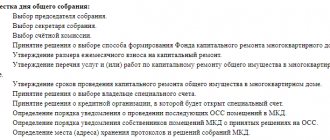Each property is determined, among other things, by the type of property on the basis of which it is recorded and assigned to the owner in the state cadastre records.
The form of ownership is understood as the type of right that arose as a result of civil legal relations that allow unimpeded ownership of real estate.
The main factor explaining the full ownership of land, apartment or residential (non-residential) premises is the degree of permissibility of disposal of the object.
The concept of property and its types
Property is an economic category that is a special form of appropriation of material goods. Such social relations arise as a result of appropriation and are of a property nature.
The following property types exist:
- general,
- state,
- municipal,
- private.
State property is considered to be the property of the Russian Federation, municipal property is the property of a city, district or other municipal entity. Private property belongs to individuals or legal entities. General presupposes the presence of two or more owners.
The law allows the existence of mixed forms of ownership.
General, state and private property can be transferred from one to another in different ways:
- through nationalization, that is, the transfer of private property to state property;
- through privatization: transfer of public to private;
- denationalization - the state returns nationalized property to the previous owners;
- reprivatization - return of state property to private owners.
Ownership and ownership have similarities and differences. So, possession is the actual dominion of a certain person over any thing. It differs from property rights in the absence of a legal status.
The first presupposes not only ownership, but also the right to use and dispose of one’s property.
Types of real estate ownership
Municipal property mostly consists of residential premises, which are provided by the municipality to low-income citizens for use according to the rules of social rent. Such property may, in the process of privatization, be transferred to another form of ownership – private.
However, the main feature of such facilities is that the municipality has the right to use and own them, satisfying the needs of citizens living in the area. However, the municipality does not have the right to alienate such property in favor of private individuals.
We recommend reading: Decoding and special cases of kosgu 225 and 226 in a budgetary institution
The concept of common property
If several citizens own property, the concept of common ownership is used. It arises when there is an indivisible thing, as well as property that cannot be divided by law.
Divisible things may also fall under this category, if provided for by contract or law.
An unlimited number of persons can enter into such legal relations. At the same time, in relation to third parties they act together.
Participants independently determine the mode of ownership and use of property.
What types of real estate ownership exist in Russia?
All property owned by individuals and legal entities is private property. This can be residential property (apartment, house, room), utility property (garage, bathhouse, barn), administrative property, which is used for economic needs (office building, warehouse, water tower, boiler room). In some cases, private individuals may also be limited in their rights in relation to property. For example, an organization owns one boiler house for the entire settlement, which heats all the buildings in it. In this case, the company will not be able to use it for other purposes.
Types of private property in the Russian Federation: individual and general. In the first case, the property has only one owner. He exercises his rights and bears obligations in relation to it, provided for by current legislation, without the consent of other persons. The second type of ownership means that the property has two or more owners. There are two types of common: joint and shared. In this case, the owners of the property perform all actions with it only jointly. The concept and types of common property are enshrined in Chapter 16 of the Civil Code of the Russian Federation.
We recommend reading: How to Find out the Last Name of the Apartment Owner by Address
Common property right
The concepts of property rights and common property rights are closely intertwined. In the second case, the right of two or more persons to own, use and dispose of the same property is implied. It arises for various reasons.
The right of common property is characterized by a plurality of subjects and the unity of the object.
Legislative regulation
The main legislative act in the field of property relations is (Civil Code of the Russian Federation). If such legal relations arise between close relatives or family members, they are subject to.
Issues of registration and registration of real estate are regulated by the following regulations:
- ;
- ;
- .
If disputes related to common property are resolved in court, the legislative basis is, as well as.
In some cases, joint property in civil law can be regulated by other legal acts.
In what cases does the right of common ownership arise?
According to the Civil Code of the Russian Federation, the right of common ownership arises by virtue of law or agreement. Although the article does not contain details, based on this norm, as well as guided by practice, the following grounds for the emergence of such a right can be listed:
- Joint acquisition of property. The most common cases are the purchase of various things and objects during marriage. Marriage is one of the main reasons why there is so much community property in our country.
- Receipt of inheritance by several persons. Often, when inheriting by law, several heirs come first, who have to divide one object among themselves.
- Conclusion of a gift agreement. Any property can be donated. Several persons can be gifted at once.
What does ownership mean?
Among the problems that are important in our social life, the topic of property remains practically unattended. For many, answering the question of what form of ownership means will be difficult.
Meanwhile, the form of ownership determines the entire system of economic relations in production, distribution, exchange and consumption. It also largely establishes the place of individuals, social groups, classes in the life of society.
Property is the result of the development of productive forces. In primitive society, the individual could not provide himself with the goods he needed. But as the tools of labor developed, private property appeared. “surplus” production was appropriated.
I would also like to note that the existence of several forms of ownership leads to an increase in labor productivity and greater efficiency due to competition between them. In large industries, entrepreneurs try to promote their property (product or service) in the Yandex search engine in order to reach the top 10 of their website. Usually they turn out to be a big plus.
In general, forms of ownership tend to change. But this is a rather long process, which, if it happens, will only be evolutionary or revolutionary. Of course, the first way is preferable because the gradual displacement of some forms by others will be more effective in practice. This can be seen remarkably, given the experience of our country, which testifies to the enormous costs of revolutionary transformation among property relations.
Types of common property rights
In accordance with the legislation of the Russian Federation, the following types of common property rights are provided: joint or shared. Let's discuss how they differ, and also consider the features of each type.
What is meant by the right of common shared ownership?
The right of common shared ownership implies a regime of ownership of property in which the share of all participants is clearly defined.
First of all, it’s worth understanding what a share is. This is a piece of property that belongs to a specific person. It can be real (identified in nature) and ideal (not allocated in nature, existing abstractly).
The share is usually expressed as a percentage or as a fraction.
Each participant has the right to own, use and dispose of the part belonging to him at his own discretion. The right of use in common shared ownership should not infringe on the rights and interests of the remaining owners.
There are also features associated with the sale of such property. Before selling his share, a person must take into account the preemptive right of other participants to purchase it. Therefore, you need to notify other owners of your intention in writing.
The characteristic features and peculiarities of the legal relations of common shared ownership are such that it is possible to sell property to a third party only if none of the participants expresses a desire to purchase it.
Determination of co-ownership rights
The provisions of civil law imply the existence of another type of common property - joint property.
The right of common joint ownership of citizens involves the ownership of the same object simultaneously by several co-owners without allocating a share to each of them.
Unless otherwise provided by agreement or law, it is assumed that all participants have equal shares, but determining a different ratio is not prohibited.
Based on the norms of legislation, as well as taking into account established practice, the subjects of the right of common joint property are spouses and participants in a peasant farm, who often belong to the same family and conduct economic activities on a common plot of land.
Citizens connected by family, although not marriage, ties can also have joint property. However, as noted earlier, due to natural reasons, the most common is the right of ownership of spouses to common property.
Main forms (types) of ownership
Municipal property
in accordance with Art. 130 of the Constitution is not a type of state property. This is an independent form (type) of ownership. At the same time, due to its public nature, the structure of this property is in many ways similar to state property. The subjects of municipal property rights are urban and rural settlements and other municipalities in general (clause 1 of Article 215 of the Civil Code).
In addition to the division of public property into state and municipal, the delimitation of objects of public property between its subjects is important.
In the Russian Federation, it is carried out on the basis of Resolution of the Supreme Council of the Russian Federation dated December 27, 1991 No. 3020-1 “On the division of state property in the Russian Federation into federal property, state property of republics within the Russian Federation, territories, regions, autonomous regions, autonomous districts, cities Moscow and St. Petersburg and municipal property."
By virtue of this regulatory legal act, the objects of exclusively federal property are, in particular, the resources of the continental shelf, the property of the Armed Forces, defense production facilities, and enterprises of the most important sectors of the national economy. At the same time, many objects of federal property can be transferred to the ownership of constituent entities of the Russian Federation (nuclear and power engineering enterprises, automobile transport enterprises, etc.). State ownership
includes land and other natural resources that are not owned by citizens, legal entities or municipalities.
The range of state-owned objects is not limited; it even includes things withdrawn from circulation or limited in circulation (clause 2 of Article 129 of the Civil Code). However, it should be borne in mind that this in no way applies to municipal property, the subjects of which can be the owners of property limited in circulation only by special instructions of the law and cannot become the owners of things withdrawn from circulation. This reveals one of the main differences in the legal regime of the two types of public property. Municipal property
primarily includes objects located on the territory of the corresponding urban or rural settlement and serving its needs (municipal housing stock, local engineering infrastructure, trade, etc.).
Registration of real estate in common ownership
All purchased real estate is subject to state registration. This applies to both residential and non-residential premises.
Registration features depend on the type of ownership of common property. For example, registration of a share in the right of common shared ownership is carried out upon the application of all participants. The only exception is when the size of the share is determined on the basis of a judicial act.
If only one person makes an application, the written consent of the remaining participants must be provided, unless otherwise provided by the contract or law.
Registration of an apartment into the common joint property of spouses takes place on the basis of an application from one of them. This is explained by the fact that a priori the husband and wife act together (the presumption of consent of the second spouse to such actions).
A different procedure may be provided for by law or agreement. The registration authority must present the notarized consent of the husband or wife along with other documents for the property.
There are government programs that provide various benefits and preferences for large families, for example:
- free allocation of land for the construction of a residential building and farming;
- maternity capital program, which allows you to receive funds to improve housing conditions.
In the latter case, registration of ownership of a house by a large family involves the allocation of a share for each family member, including minor children.
What does public ownership mean?
Now we will look at what a public form of ownership means. In general, this is the belonging of a property to a public entity, which is the entire state, a specific subject of the federation or a municipality.
In large cities, many new buildings are publicly owned by the state. And if you become the owner of real estate in such a building, then in order to make it private you will need to privatize it. This is not as easy to do as creating an electronic wallet to pay for the things and services you need. This is a complex and lengthy process that requires a lot of time.
You need to think carefully before this procedure. If something happens to the property as a result of force majeure, the state will provide you with another option. The same goes for improving living conditions. If the dimensions do not meet sanitary standards, then you will also be provided with a new property.
Features of property rights protection
Protection of property rights is a set of methods established by law that are aimed at restoring and protecting the property interests of citizens.
The legislation stipulates that all types and forms of property are recognized and equally protected on the territory of the Russian Federation.
Ways to protect the rights of owners
Civil law distinguishes the following options for protecting property rights and other property rights:
- property rights;
- laws of obligations;
- arising from the provisions of civil law.
The first group includes the following types of legal claims:
- vindication claim for recovery of an object from illegal possession;
- negatory claim to eliminate circumstances impeding the exercise of property rights.
The subject of the first type of claim must be an individually defined object that is in the possession of another person.
Legal possession of property rights is restored by making claims against the unlawful owner who is in possession of the item.
There are two types of illegal possession:
- conscientious. The current owner does not / cannot know about the fact of illegal possession;
- unconscionable. The unlawful owner is/should be aware that he has no legal rights to the thing.
General provisions on property rights and other property rights determine that a negatory claim establishes requirements to stop the violation that exists at the time of going to court.
Both the owner of the property and its title owner can submit such an application.
Legal obligations protection methods are based on contracts, and sometimes arise from non-contractual obligations. Such methods of protecting rights can be implemented by filing various types of claims for:
- compensation for damage caused by non-fulfillment/improper execution of agreements;
- return of items provided for use under the contract;
- compensation for property damage.
The last type of defense includes claims for recognition of property rights. The plaintiff is the one to whom the thing belongs on any legal basis.
What is the form of ownership
In the modern world, we are all the owners of some thing. But rarely does anyone know what a form of ownership is and rarely does anyone ask this question in everyday life. You and I have already answered this question and we know that this is the secured right of the owner to the property that belongs to him.
Even in a primitive society, which was based on primitive tools, hunting and gathering, the economic and defensive abilities of the individual were insignificant. This forced them to largely submit to the clan collective, which supported them in difficult situations through relationships of cooperation and assistance. Consequently, then there was a dominance of public (tribal) property in relation to individual property.
As the ancient world developed, the discovery of agriculture and metal production led to the creation of large economic objects - cultivated lands, reclamation systems, herds of domestic animals. Each individual already understood why bread crumbs were needed on a site in “ancestral” property during a famine.
In what cases is the right of common ownership terminated?
The right of joint ownership may be terminated on general grounds, as well as as a result of sale, inheritance of a share in property, its separation and in some other cases.
General grounds for termination of ownership rights
According to the law, ownership rights are terminated as a result of:
- alienation by the owner of the property;
- waiver of such right;
- destruction of property;
- loss of the corresponding right.
The right of common ownership of residential premises can be forcibly terminated on the following grounds:
- foreclosure on property;
- alienation of property that a given citizen cannot legally own;
- alienation of a real estate property due to seizure of a land plot;
- requisition;
- confiscation;
- other grounds provided for by law.
Features of selling a share
As noted above, the contents of the purchase and sale agreement can be signed if the other participants have been warned in advance of such an intention. They are given 30 days to preemptively purchase part of the property.
If desired, a citizen has the right to immediately write a written refusal so that the person can sell his share to a third party.
A participant can sell a share to a co-owner under the same conditions that will be put forward for third parties.
You cannot give preferences to another buyer.
Features of share inheritance
Ownership of land and other real estate can be inherited. Moreover, a share in the common property is inherited either by one person or by several. This happens on a general basis by will or by law.
Procedure for allocating a share
The need to allocate a share in an apartment arises for a variety of purposes. As a rule, the share is allocated in kind. If this is impossible, the person is paid monetary compensation.
In addition, at the request of the plaintiff, the court is ready to establish the procedure for using housing. When allocating a share, a citizen loses his rights to the remaining part of the property.
Find out more about allocating a share in an apartment.
Methods for dividing property
Both husband and wife can apply for an apartment during marriage. Its division in the event of divorce is carried out in two ways:
- on a voluntary basis,
- through the court.
The first option involves concluding a written agreement on the division of marital property. This can be done both during the marriage and upon its dissolution.
The agreement is drawn up in relation to the entire property or a specific part of it. It should:
- indicate in detail which objects are subject to division;
- establish the value of the property;
- determine the size of shares.
The document is subject to notarization. This will allow you to present the agreement in court if necessary.
The notary charges a fee for his services, which, according to , is 0.5% of the total amount under the agreement, but cannot be lower than 300 or more than 20 thousand rubles.
If the issue cannot be resolved peacefully, you will have to go to court. Along with the application, you must provide evidence on the basis of which the final decision will be made.
Find out more about the division of property during the divorce of spouses with children.
conclusions
Registration of ownership rights in joint activities or property of spouses and close relatives is a frequently arising need. Common property can be joint (with the definition of the shares of each participant) and shared. It arises as a result of purchasing real estate, receiving an inheritance or gift, as well as during the division of property during a divorce.
According to the law, all forms of ownership of land and other real estate are equally protected by the state.
How to find out the form of ownership
Many business owners are faced with the problem that they do not understand how to find out the form of ownership. Now we will look at how simply this can be done.
All forms of ownership that are established by law are taken into account in the all-Russian classifier of forms of ownership, or OKFS for short, which has long been included in the RF ESKK system. It came into force on 01/01/2000.
The classification occurs along with the principle of naming the type of owner. OKFS creates registers about all subjects of various forms of ownership on the territory of the Russian Federation, with the help of which important problems of an economic and social nature are solved. This coding is intended to facilitate the collection of information about enterprises with different forms of ownership.
If you study the statistics, it will not be enough for a successful business owner to understand what LTV is in business development if they do not know their form of ownership.
Unfortunately, many people forget about the OKFS immediately after they enter the data into the reporting form. However, this does not mean that this introduction is useless. It contains detailed information about the owner of the enterprise, its form of ownership and the enterprise itself.






